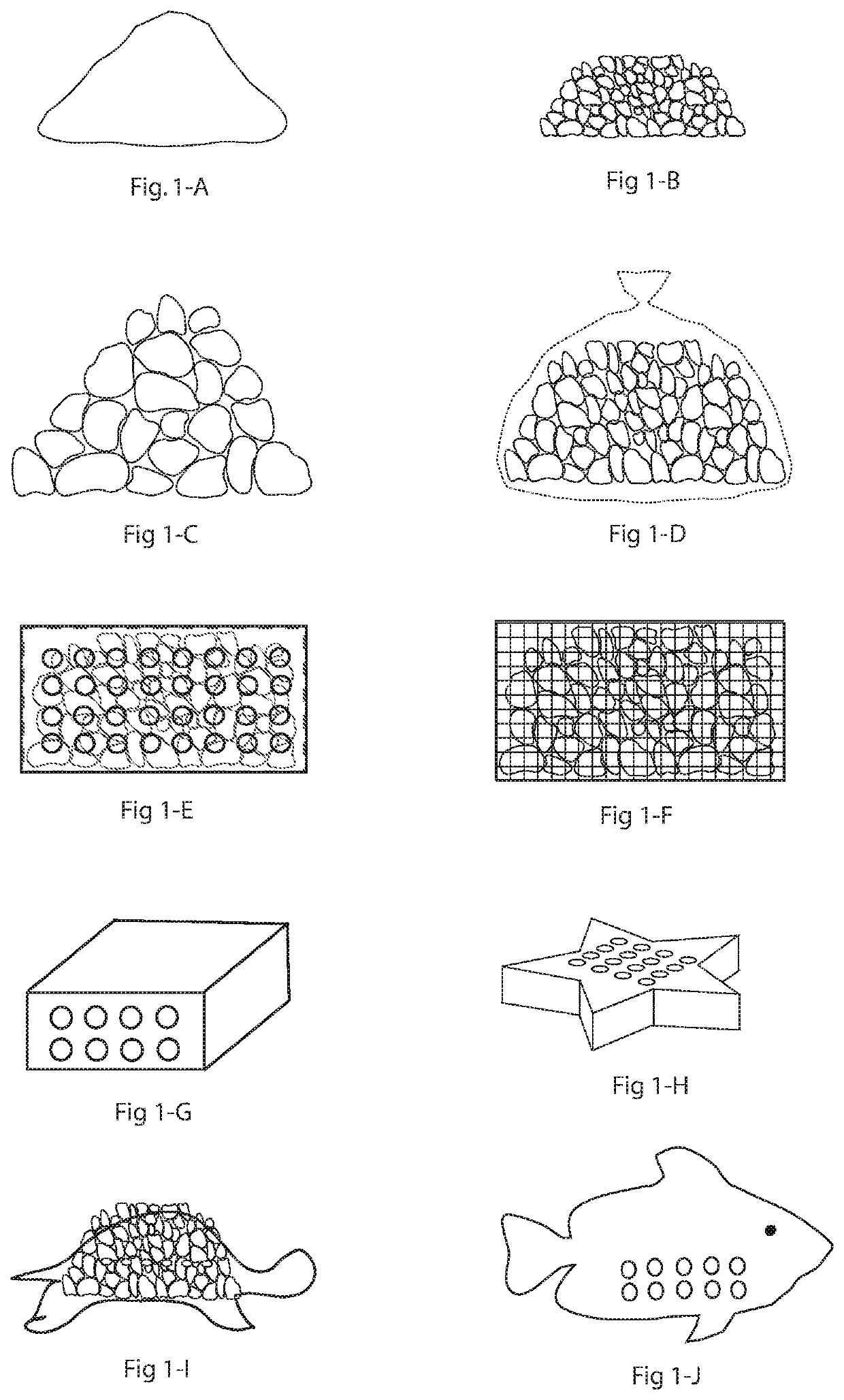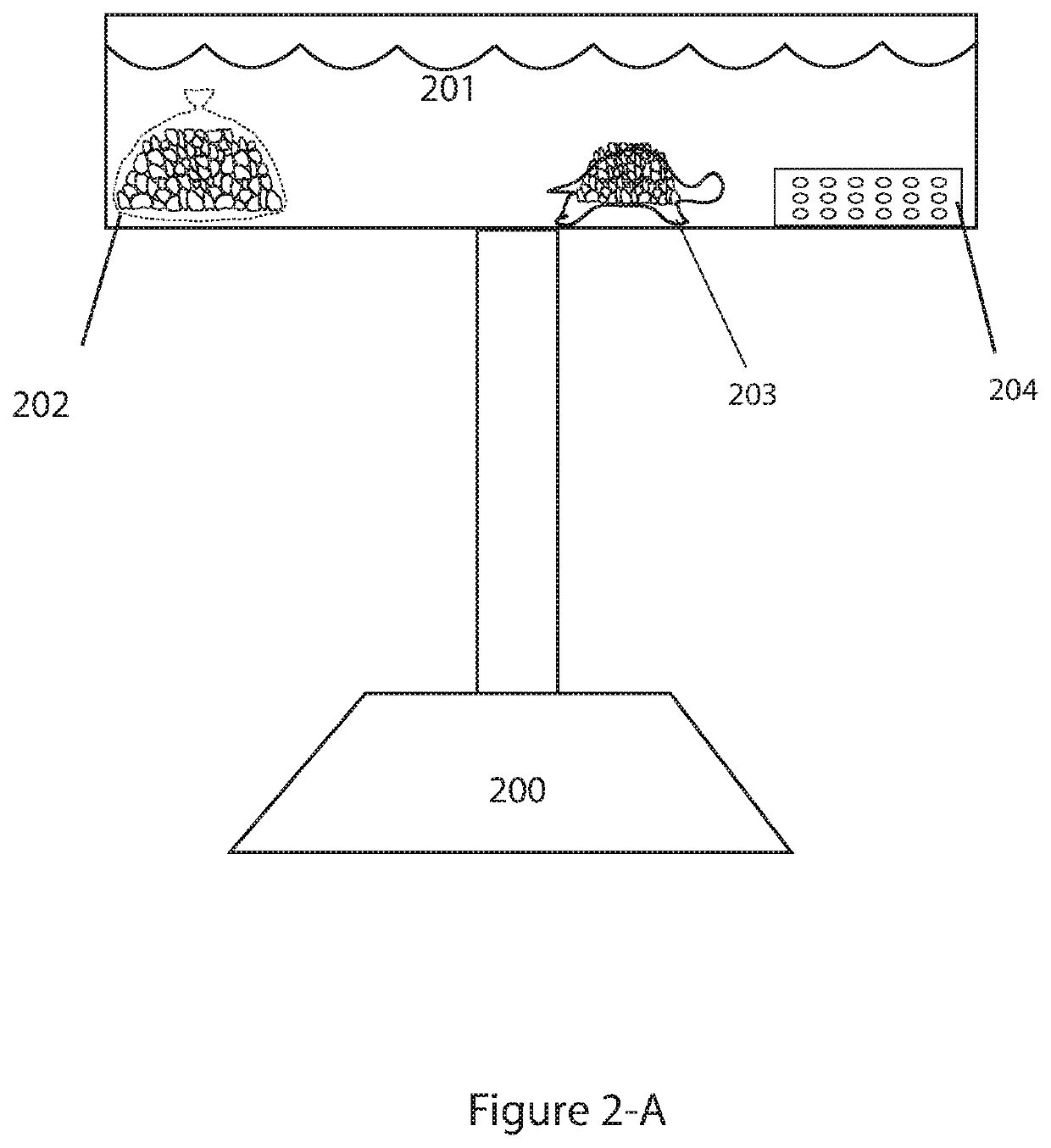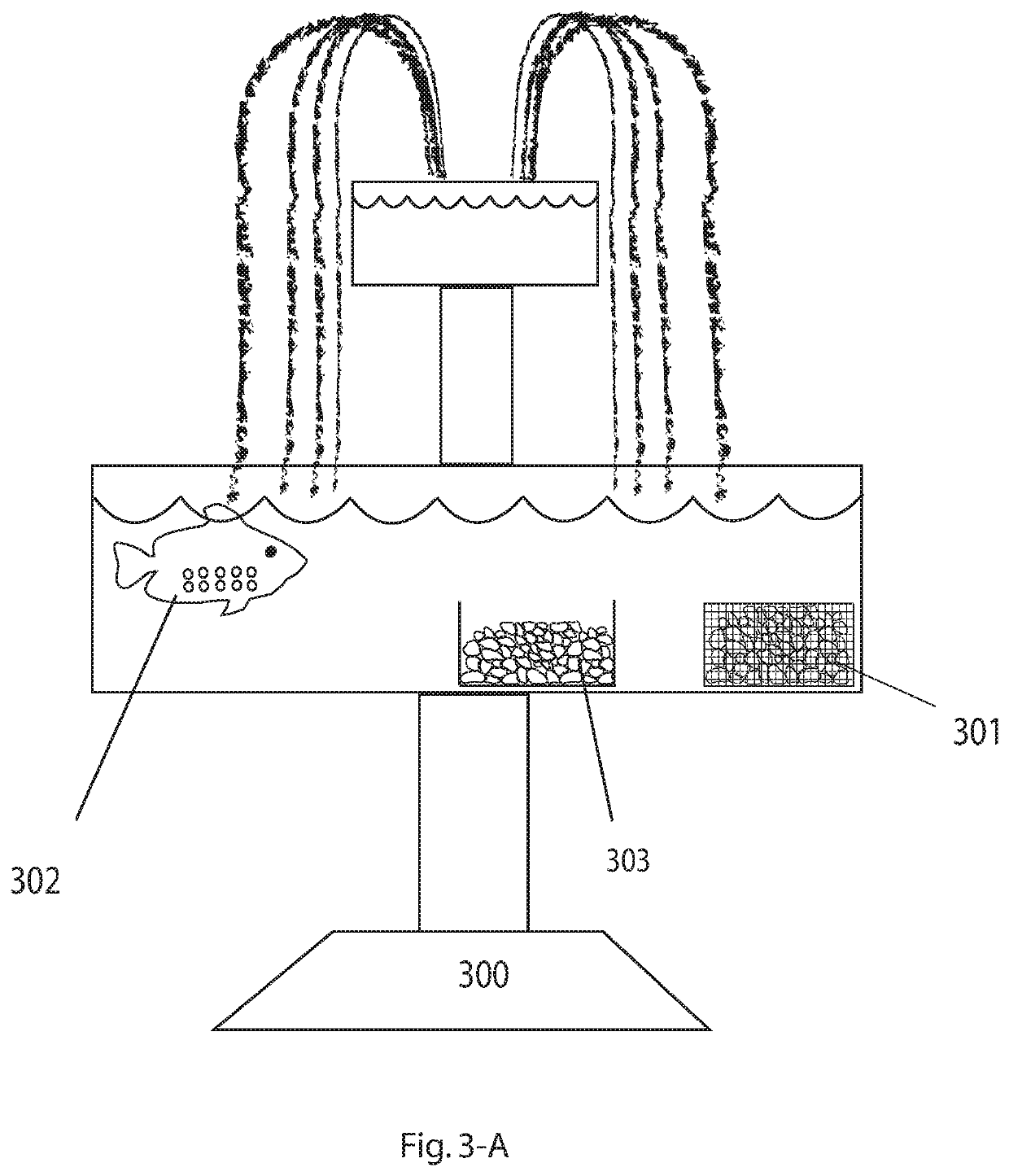Safe Long-Lasting Algae Control For Ornamental Water Features
a technology of ornamental water features and algae, which is applied in the direction of specific water treatment objectives, chemistry apparatus and processes, and other chemical processes, can solve the problems of unnatural, unsafe for animals and children to contact, and other antimicrobial additives such as chelated or metalorganic compounds, and achieves the effects of preventing algae growth, preventing the growth of algae, and inherently safe for drinking
- Summary
- Abstract
- Description
- Claims
- Application Information
AI Technical Summary
Benefits of technology
Problems solved by technology
Method used
Image
Examples
example 1
[0123]Two 1 gallon shallow cement bird baths were filled with water and inoculated with 5 ml of ALG-1. Unit 1 was used as a control, and Unit 2 was treated by adding a polyester mesh bag of 37 g of 14×28 mesh granular activated alumina. Both units were exposed to sun, and the average daytime temperature was approximately 70 degrees. After 3 weeks, the bottom of Unit 1 was covered in brown algae, while Unit 2 was clear. The dissolved iron in Unit 1 tested as 50 ppb, while dissolved iron in Unit 2 was below detection level.
example 2
[0124]A deep 3 gallon glazed ceramic bird bath was monitored until the water was green with algae. It was then re-filled but not cleaned, allowing a ring of algae to remain on the side of the bird bath. 50 g of spherical activated alumina was placed in a porous mesh bag and then placed on the bottom of the bird bath. The average daytime temperature was approximately 70 degrees. The bird bath was visually monitored. The algae remaining on the side but did not grow, and within 2 days had started to turn brown. After 5 days all the algae had died, turned brown, and then decomposed. The bird bath was re-filled with new water and the alumina left in. No new algae growth started, and the bird bath at 21 days was still algae-free.
The chart below documents the results
Day 0Bird Bath containing algae, filled and alumina placed underwater.Day 2Algae turning brownDay 5Algae all dead and spontaneously falling off side; Refilled withtap waterDay 7No trace of algae, Remained clear and cleanDay 14N...
example 3
[0125]A three tiered 5 gallon cement fountain with green and black algae was emptied and sprayed with water, and refilled. 500 grams of granular activated alumina was split into 5 porous plastic mesh bags and placed in the top tier of the fountain. The fountain ran and remained algae-free for 4 weeks.
PUM
| Property | Measurement | Unit |
|---|---|---|
| pH | aaaaa | aaaaa |
| weight % | aaaaa | aaaaa |
| concentration | aaaaa | aaaaa |
Abstract
Description
Claims
Application Information
 Login to View More
Login to View More - R&D
- Intellectual Property
- Life Sciences
- Materials
- Tech Scout
- Unparalleled Data Quality
- Higher Quality Content
- 60% Fewer Hallucinations
Browse by: Latest US Patents, China's latest patents, Technical Efficacy Thesaurus, Application Domain, Technology Topic, Popular Technical Reports.
© 2025 PatSnap. All rights reserved.Legal|Privacy policy|Modern Slavery Act Transparency Statement|Sitemap|About US| Contact US: help@patsnap.com



